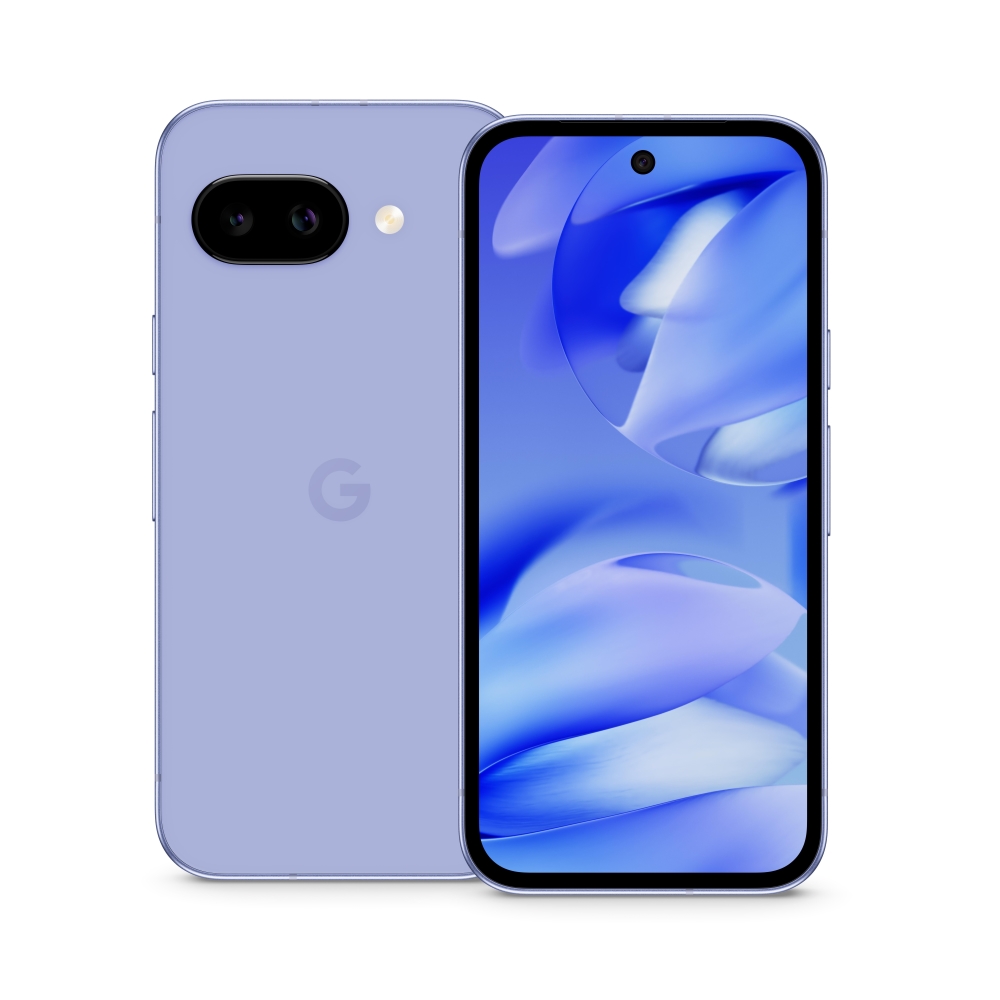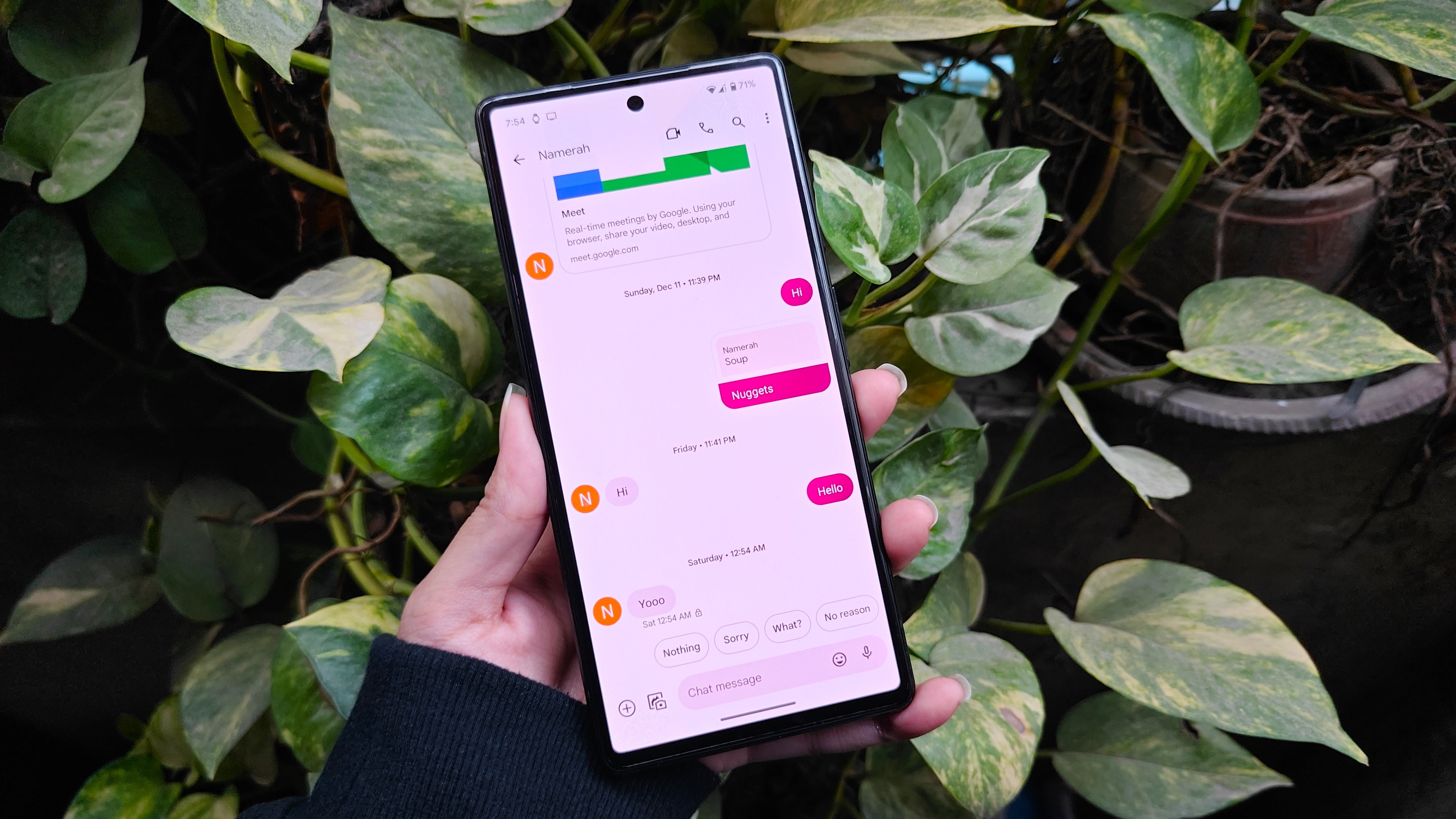I put the Google Pixel 9a, 8a, and 7a cameras to the test — here's what I learned
Google is using more computational photography processing than ever.
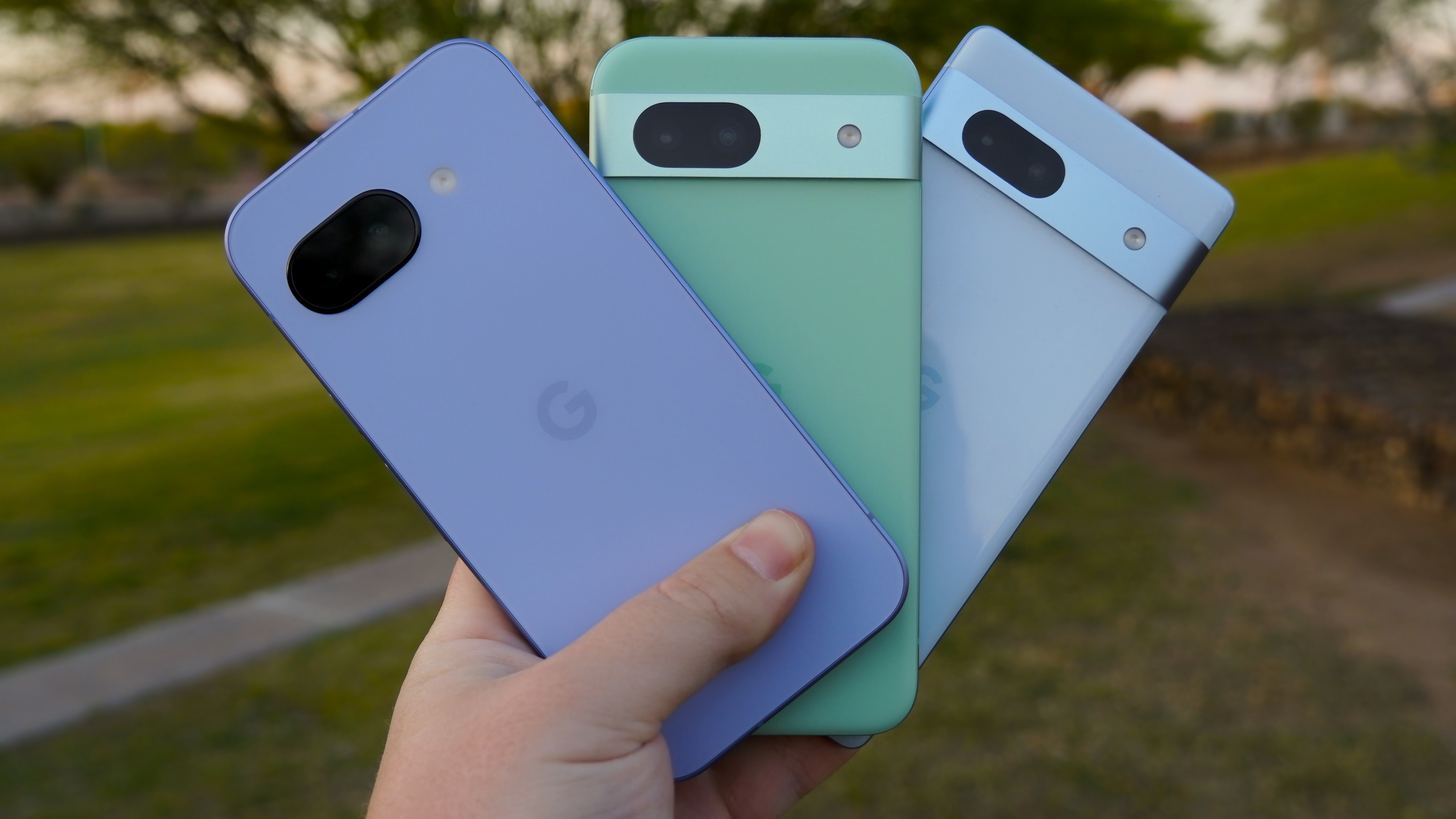
The Google Pixel 9a is here, and it packs a new primary rear camera for the first time in two generations. Google ditched the 64MP primary sensor on the Pixel 8a and Pixel 7a for a 48MP wide camera on the Pixel 9a. By now, you might be wondering why Google went with a smaller primary camera sensor with fewer megapixels and how it performs compared to previous-generation Pixels.
As it turns out, Google switched to a different main camera in part to make the Pixel 9's almost-flush camera system possible. "Pixel 9a has an all-new rear main camera that enables the new industrial design and new Macro Focus," the company told Android Central.
After two weeks of testing the Pixel 9a, Pixel 8a, and Pixel 7a side-by-side, I can confidently say that the latest camera hardware isn't a noticeable downgrade from the older models. You might notice a slight dip in detail in certain situations, specifically in unfavorable lighting conditions. But you'd need to zoom in to notice, and it's a minuscule drop compared to all the other Pixel 9a camera improvements.
Notably, the Google Pixel 9a appears to reverse a recent trend with Pixel cameras that oversaturated colors at the expense of accuracy. The Pixel 9a is the most color-accurate Google phone I've tested in at least a few generations, and that should be the main takeaway here. Let's dive in and explore how the Pixel 9a, Pixel 8a, and Pixel 7a fare in head-to-head rear camera tests.
Google Pixel 9a vs. 8a vs. 7a: Main camera
First, let's start out with some specs. The Google Pixel 9a is equipped with a 48MP, f/1.7 primary camera with a 1/2-inch image sensor size. By comparison, both the Pixel 8a and Pixel 7a have a 64MP, f/1.89 primary camera with a 1/1.73-inch image sensor size. The change in megapixel count shouldn't concern you at all (the Pixel 9 has a 50MP camera, for reference), but the smaller image sensor size on the Pixel 9a was initially concerning.
Image sensor size directly correlates to image quality because bigger sensors can take in more light and color information, leading to more detailed shots. However, it isn't the only thing that leads to great smartphone photos — other things like computational photography, color science, and image processing also play a huge role.
In the image gallery of camera sample comparisons below, you'll see that there isn't a noticeable drop-off in detail between the Pixel 9a, Pixel 8a, and Pixel 7a in daylight.
Be an expert in 5 minutes
Get the latest news from Android Central, your trusted companion in the world of Android
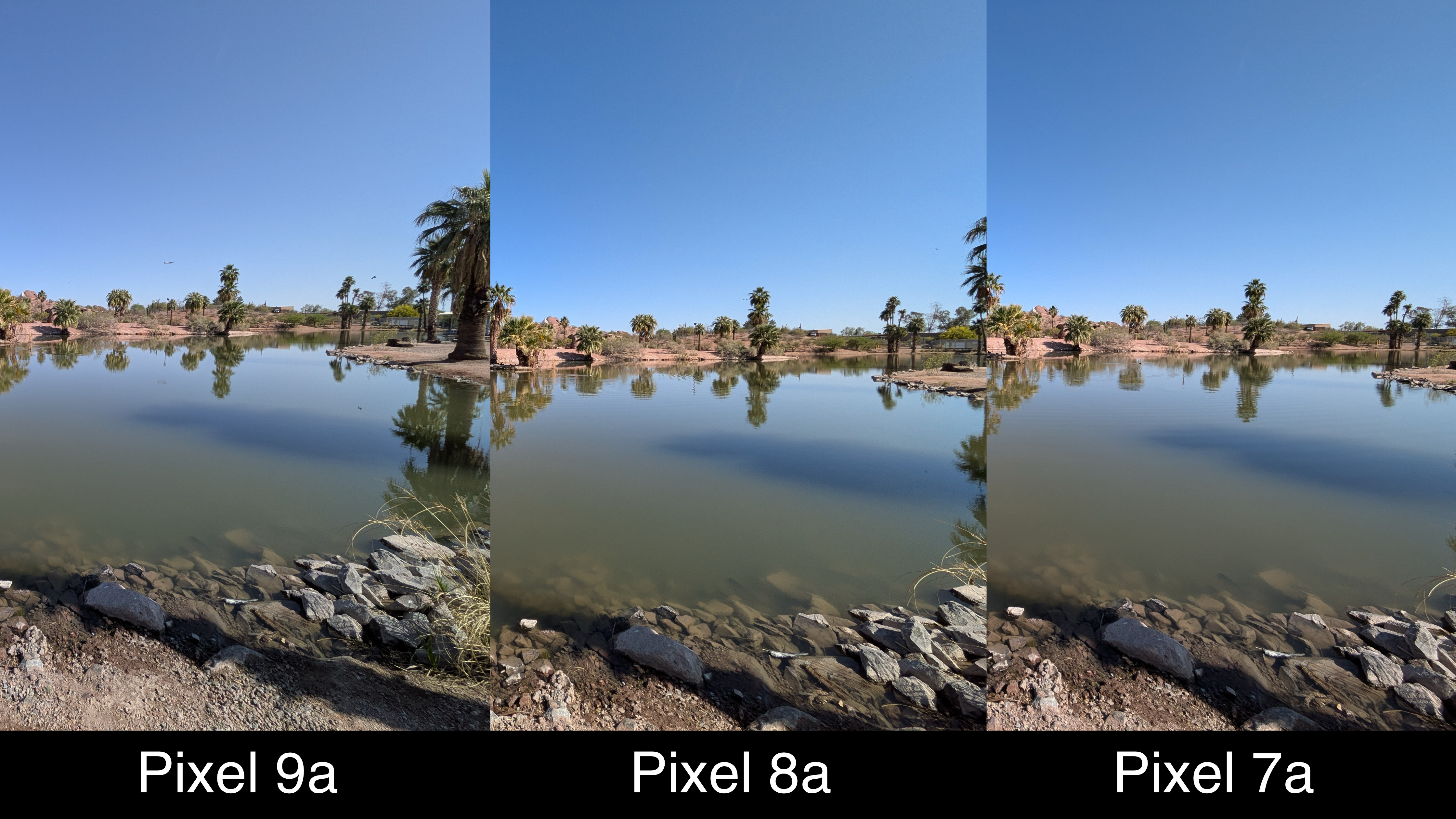
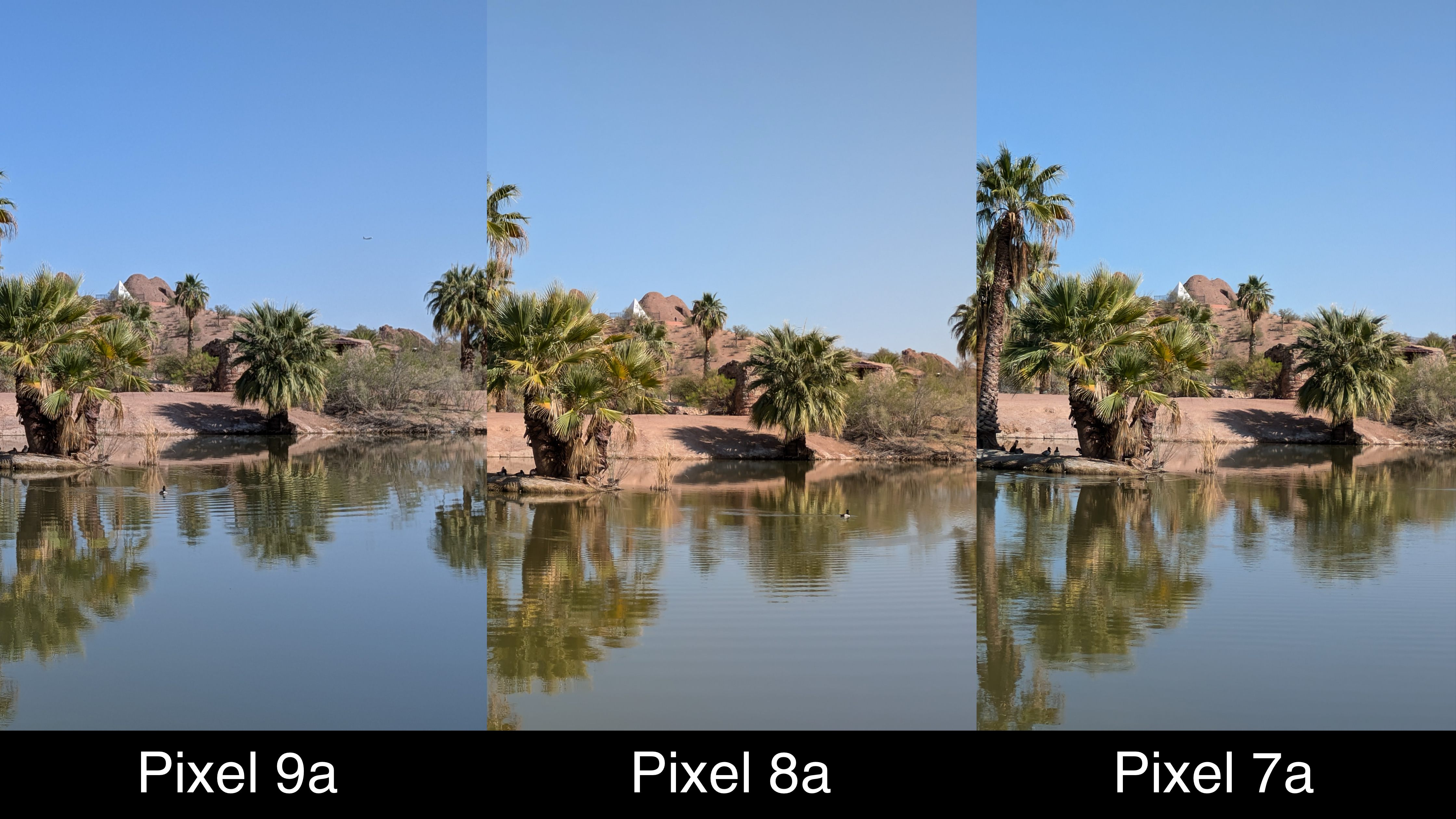
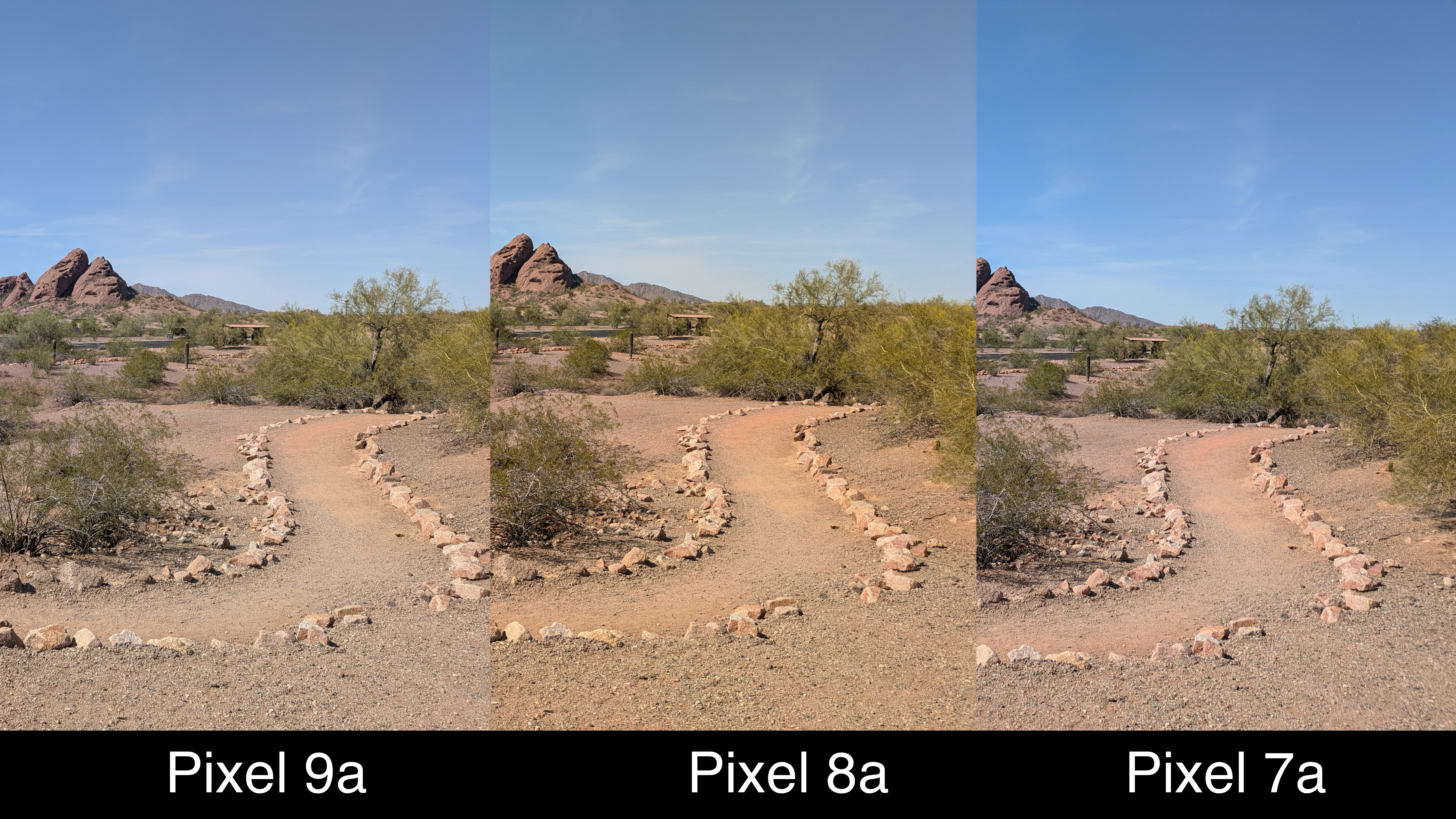
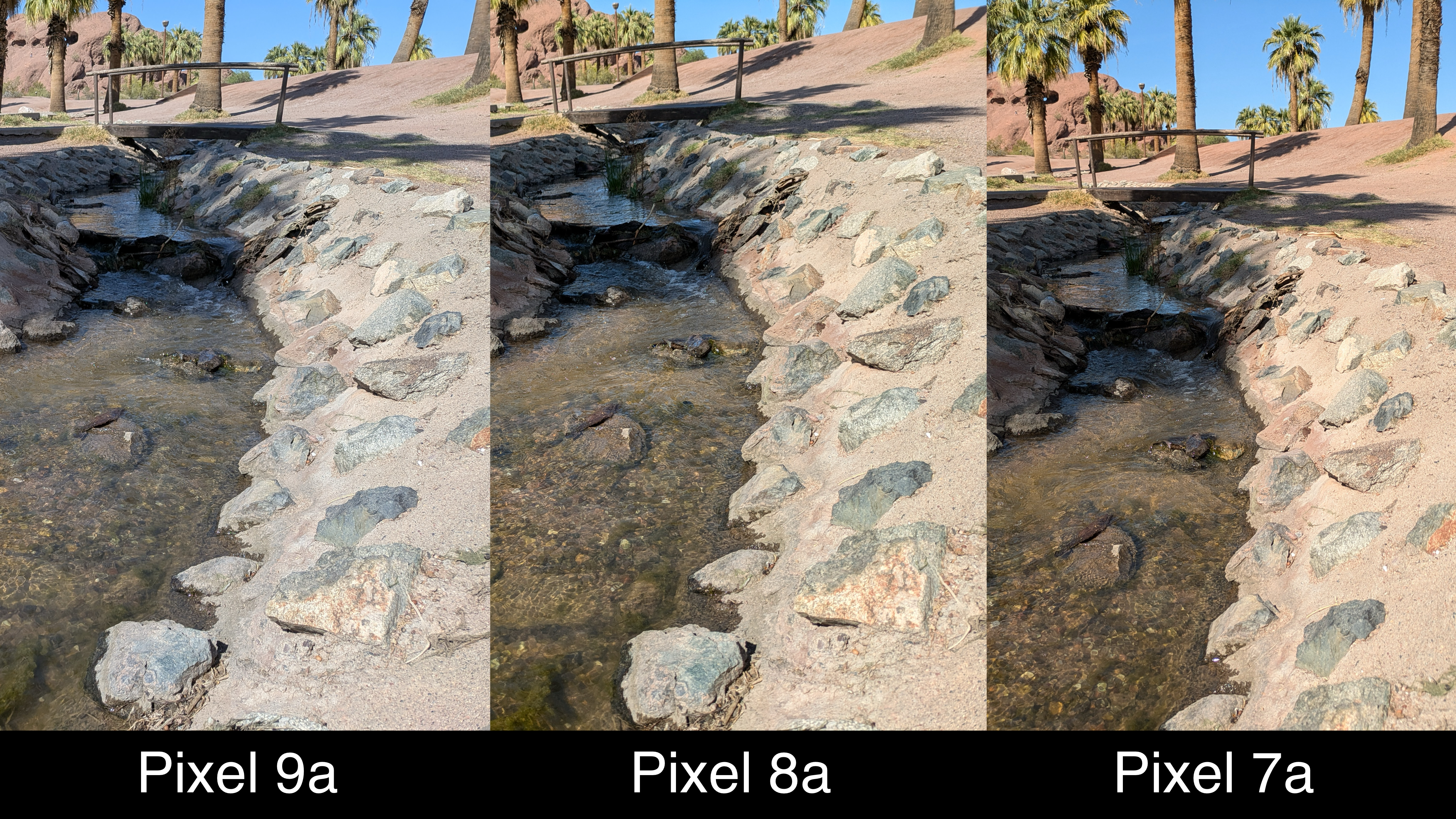
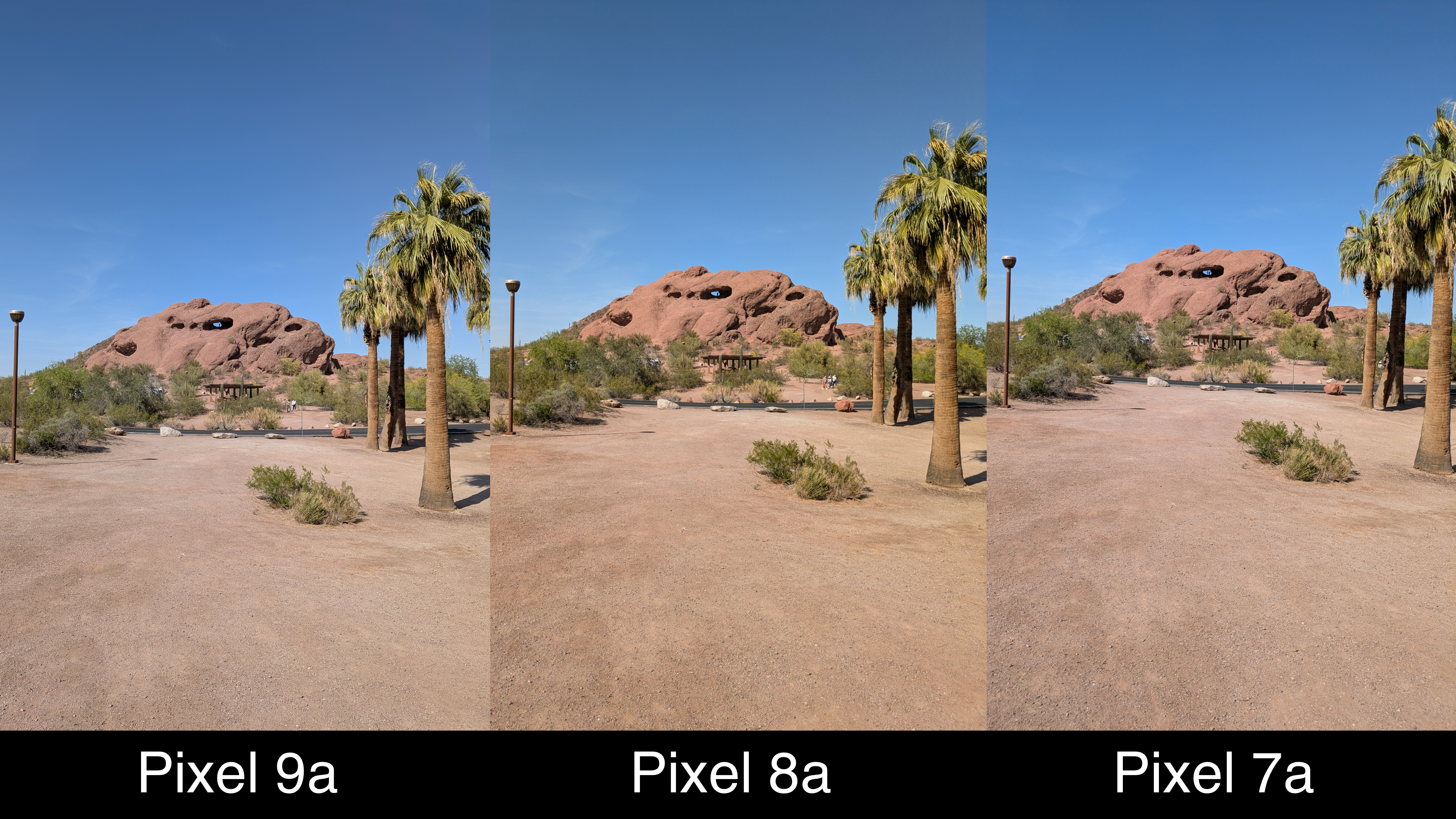
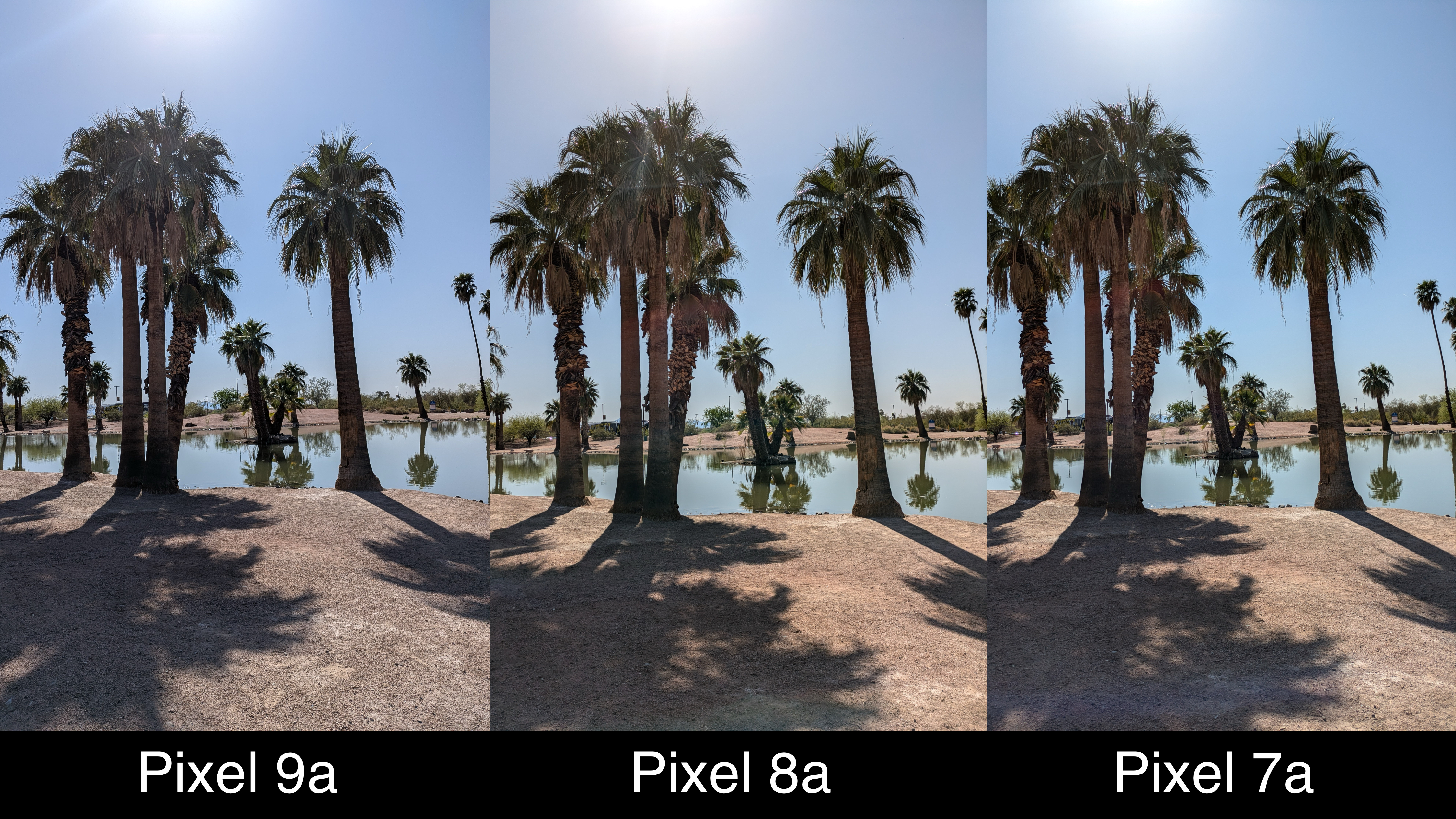
In terms of detail and quality, the Pixel 9a matches or beats the Pixel 8a and Pixel 7a in every test. What really caught my eye was the differences in HDR and color science in photos captured with the Pixel 9a. Whether it's related to the camera sensor itself, upgraded Tensor G4 chip, or software, it leads to photos that more accurately represent the landscape you're trying to capture.
I live in the Arizona desert, an environment that Google Pixel cameras of all price points have struggled to capture accurately. Google's preference for vibrant and colorful photos has often oversaturated these kinds of shots. For instance, in some examples above captured with the Pixel 8a and Pixel 7a, the sky is too deep of a blue, or the sand is too deep of an orange.
Meanwhile, the Pixel 9a accurately depicts the sand in the photos above as a tan color rather than a clay color. The sky and water are often less vibrant when captured with the Pixel 9a as opposed to older models, but that's for the best. It is the more accurate representation of the environment and could mark a breakthrough for Google.
I came away incredibly pleased with the fresh take on color science with the Pixel 9a. It's improved not only compared to the Pixel 8a and Pixel 7a but also compared to the regular Pixel 9.
Google Pixel 9a vs. 8a vs. 7a: Ultrawide & macro photography
The Pixel 9a's main camera shares specifications with the Pixel 9 Pro Fold's main camera, which could mean it's the exact same sensor. Regardless, this leads to the Pixel 9a getting the same Macro Focus feature as the Pixel 9 series (first added to the Pixel 7 Pro). It intelligently tries to identify and isolate objects that are close to the camera lens, around five centimeters away, using a mix of hardware and software.
Google has a handful of excellent camera features, like Add Me and Best Take, but Macro Focus on the Pixel 9a might be my favorite one yet, and that's a high compliment. The feature isn't perfect—it occasionally blurs a small part of the intended object or not enough of the background. That being said, Macro Focus produces the best macro shots on a phone without a dedicated macro lens.
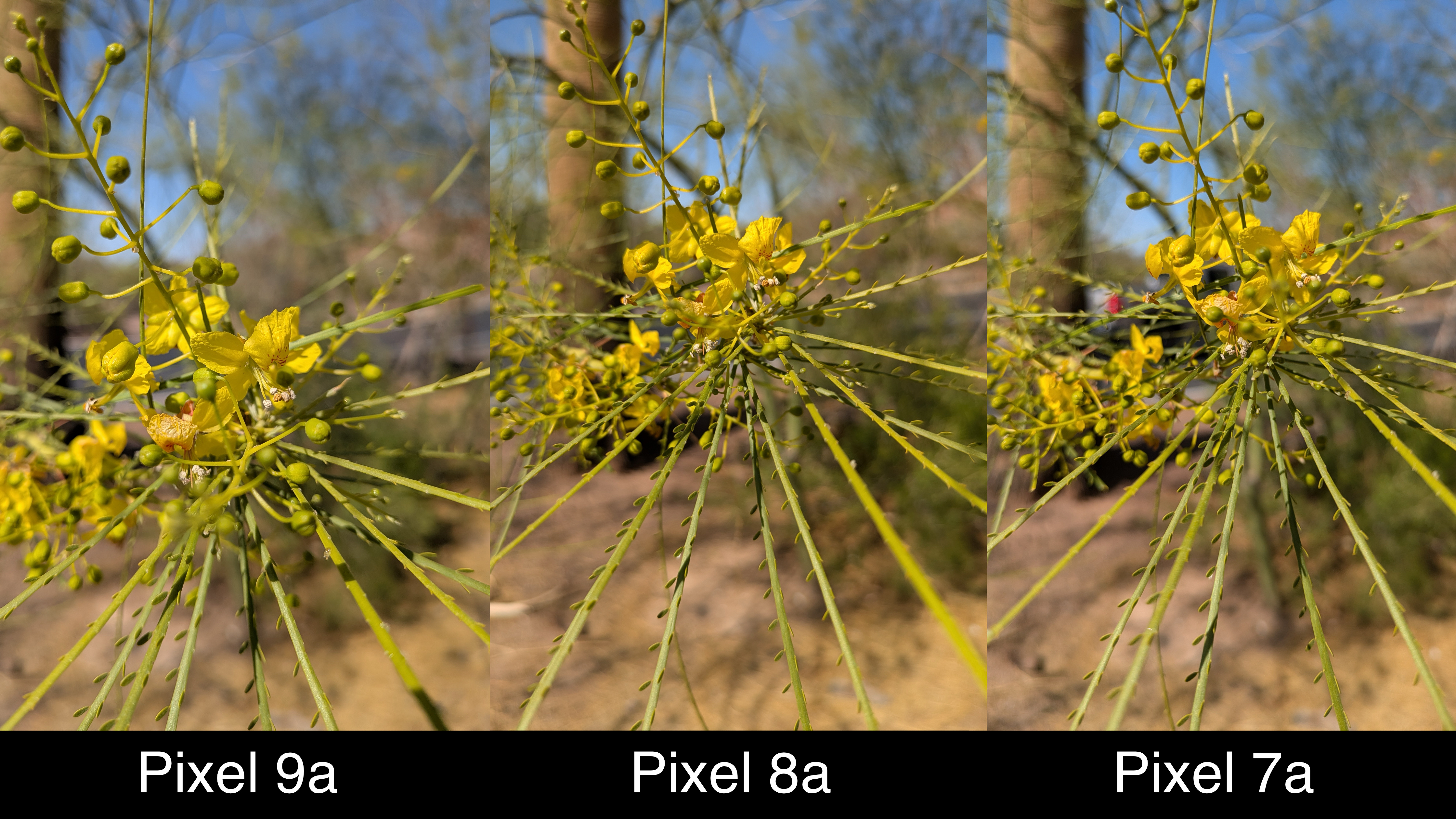
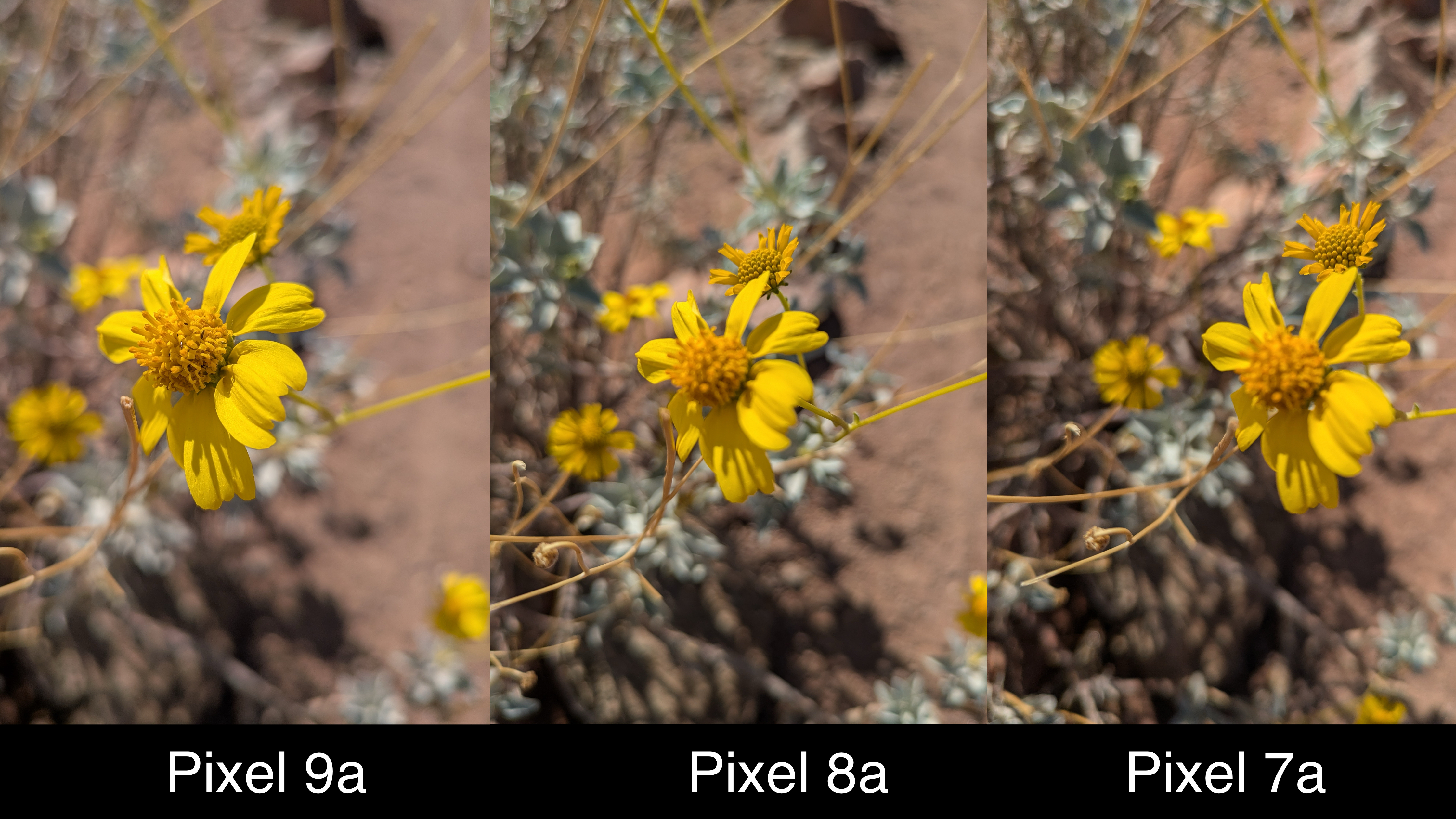
As you can see in the photos above, the Pixel 9a does a better job at blurring the background than both the Pixel 8a and Pixel 7a. It also provides much more detail than older A-series Pixel phones. My favorite Macro Focus shot captured the individual hairs (technically called trichomes) on a tomato plant, as you can see below.
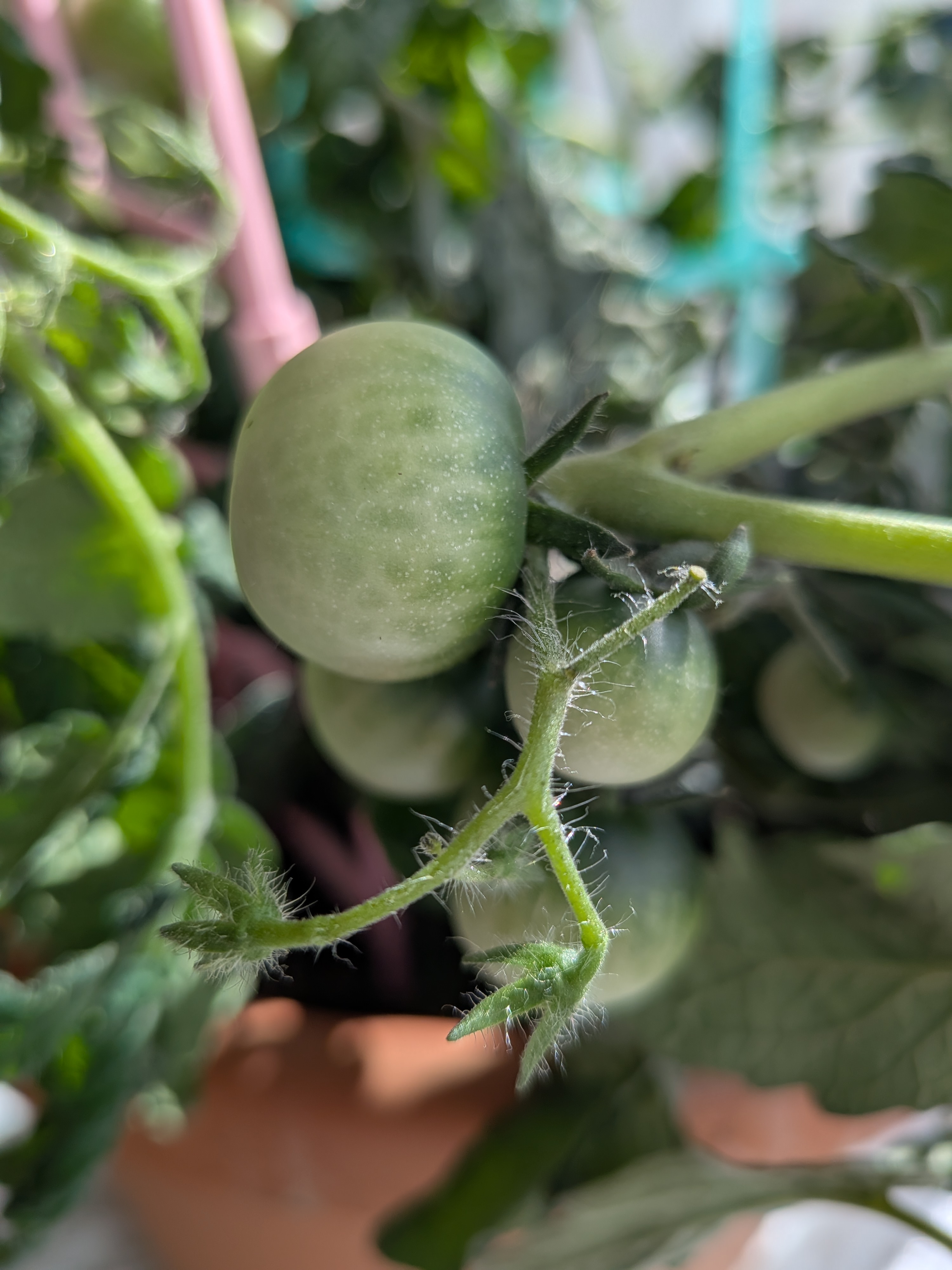
The ultrawide camera on the Pixel 9a is the exact same one featured on both the Pixel 8a and the Pixel 7a. It's a 13MP ultrawide lens with an f/2.2 aperture and a 120-degree field of view. Naturally, the Pixel 9a, Pixel 8a, and Pixel 7a produce ultrawide shots with similar levels of detail.
Once again, the Pixel 9a's improved color science creates a photo that's drastically more accurate than the Pixel 8a despite using the same hardware.
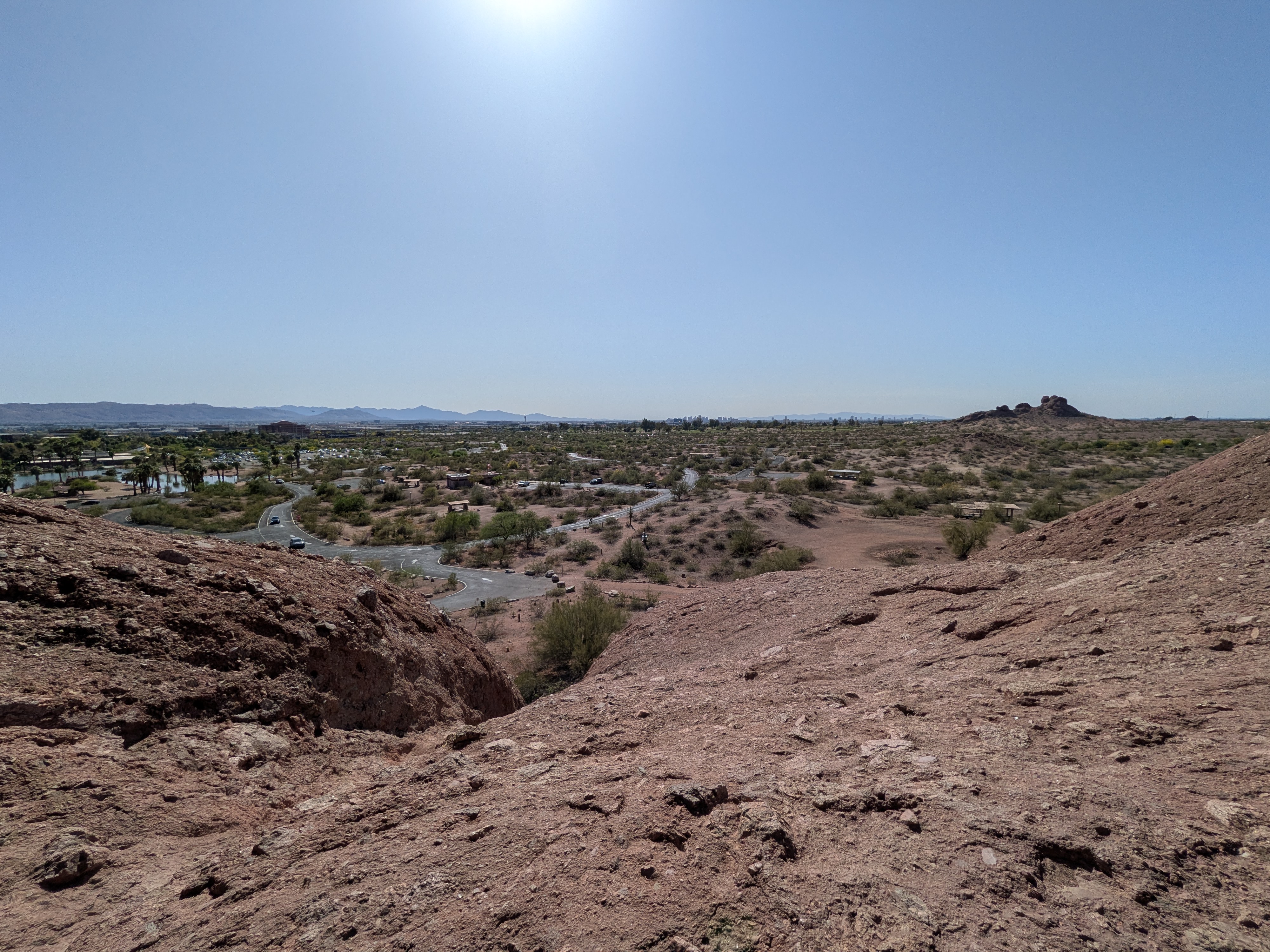
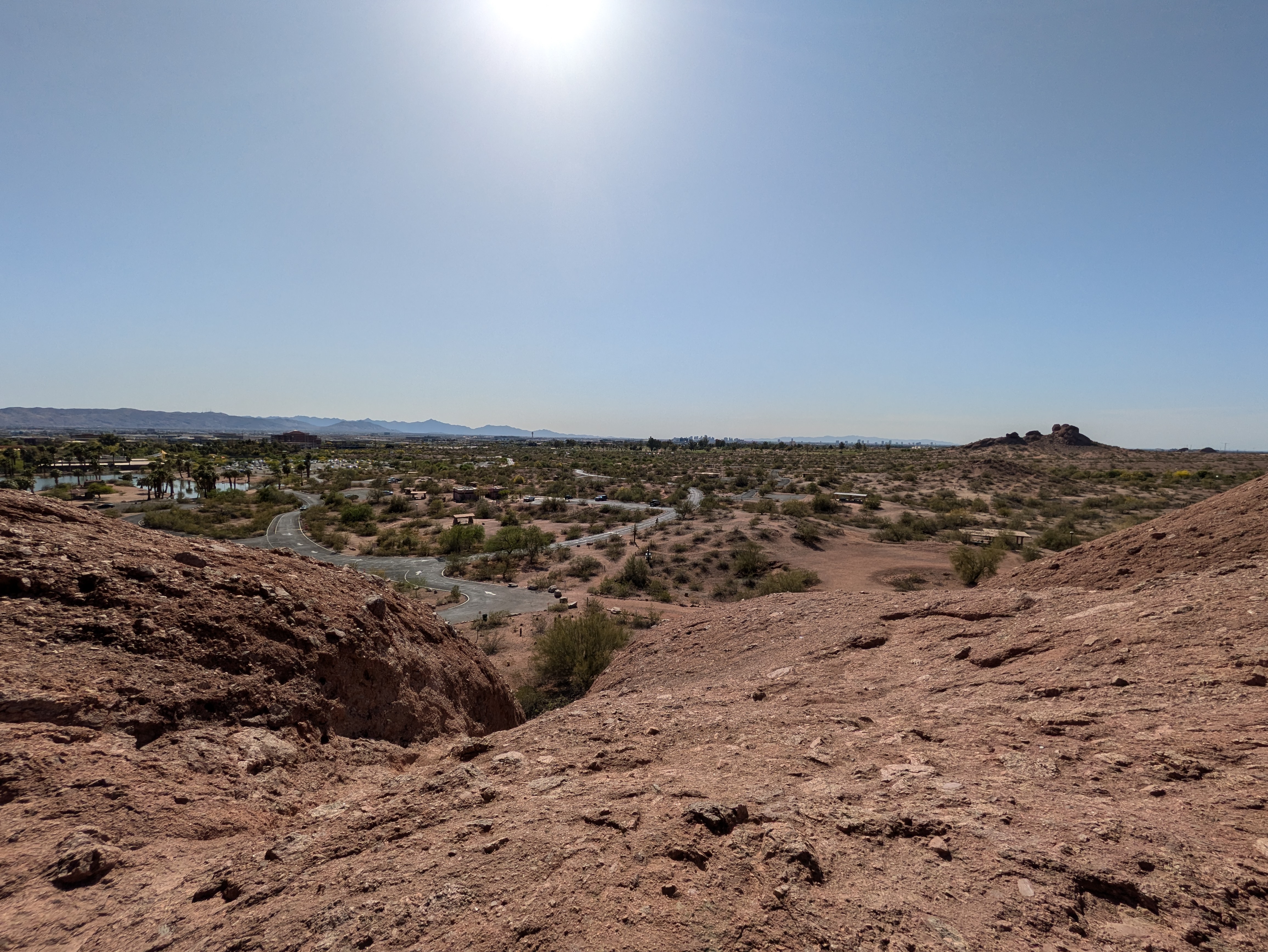
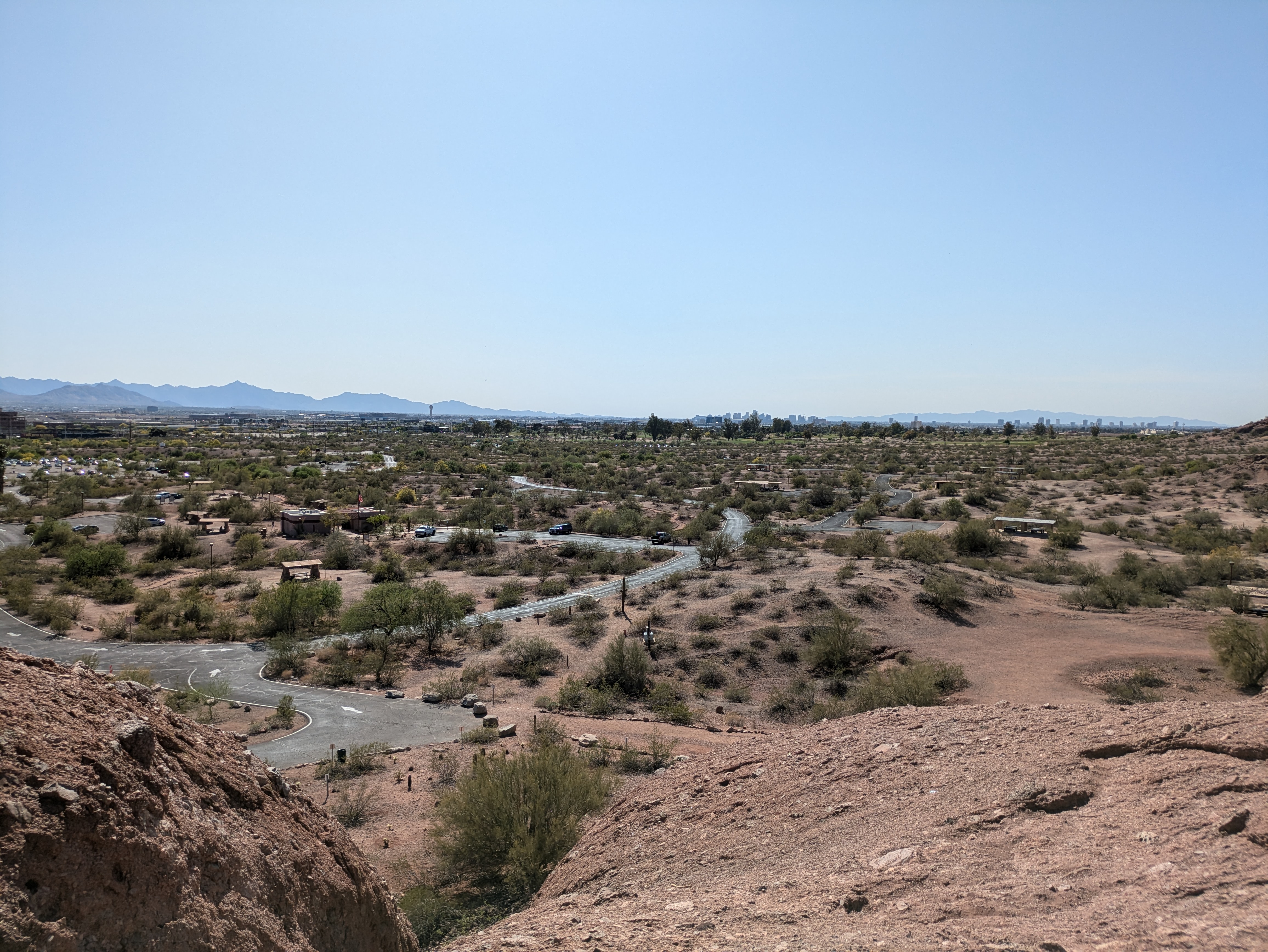
With the primary and ultrawide lenses, you can take photos at optical quality at both 0.5x and 1x zoom. Any further zoom than that will be using digital zoom, with Super Res Zoom available at up to 8x. By contrast, the Pixel 9, which also has two lenses, is able to capture optical quality images at 2x zoom.
Although its omission is understandable, given the Pixel 9a's price point, it's hard to live without optical-quality zoom at higher levels.
Google Pixel 9a vs. 8a vs. 7a: Low-light capture
It's relatively unsurprising that the Pixel 9a turns in good photos with favorable lighting conditions, but how does it fare when the sun starts to set? This is the area where the Pixel 9a's smaller sensor might start to hurt it compared to the Pixel 8a and Pixel 7a. The results do confirm that the Pixel 9a has ever-so-slightly less detail in night shots than the prior two generations, but not enough to be meaningful.
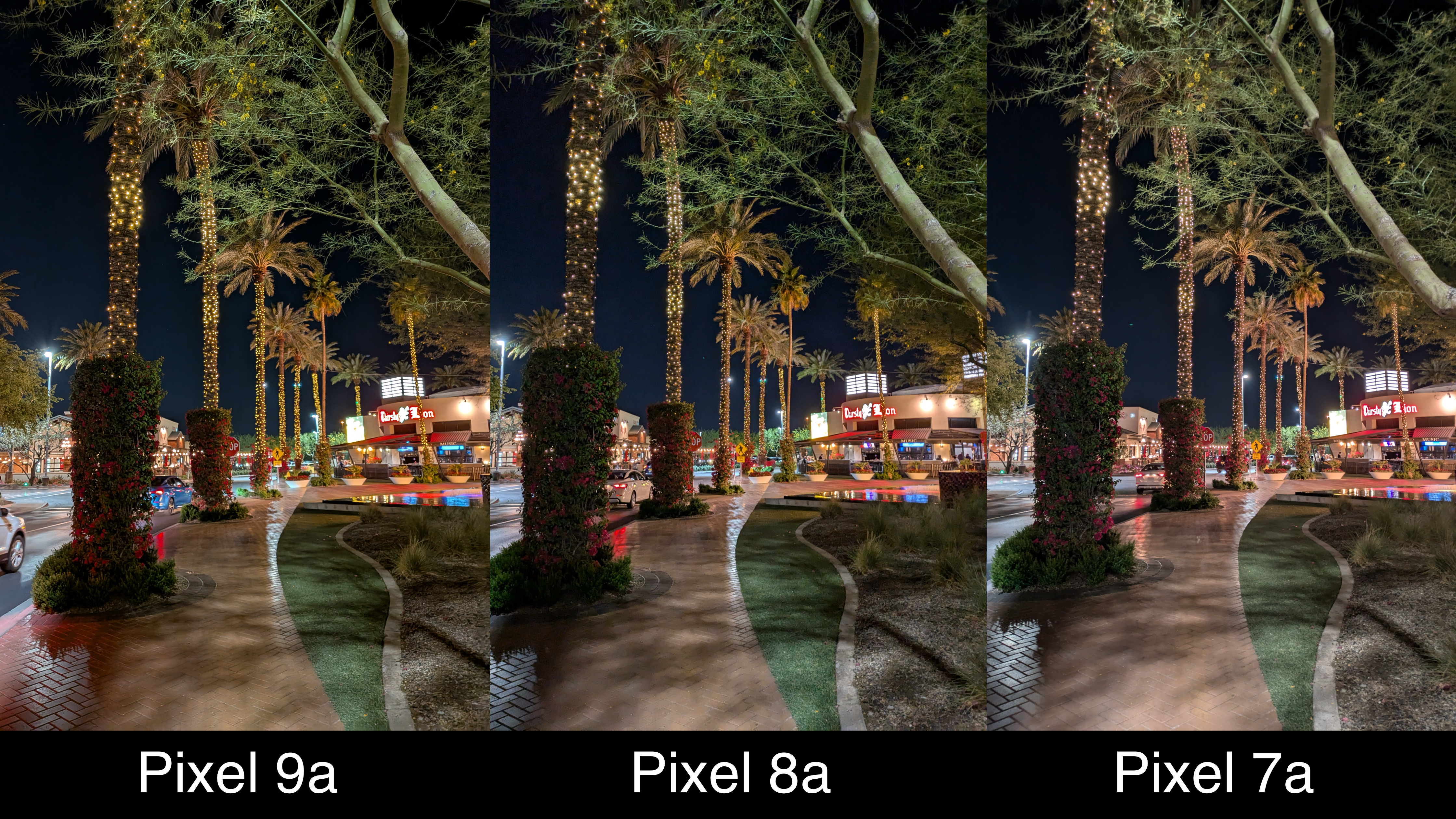
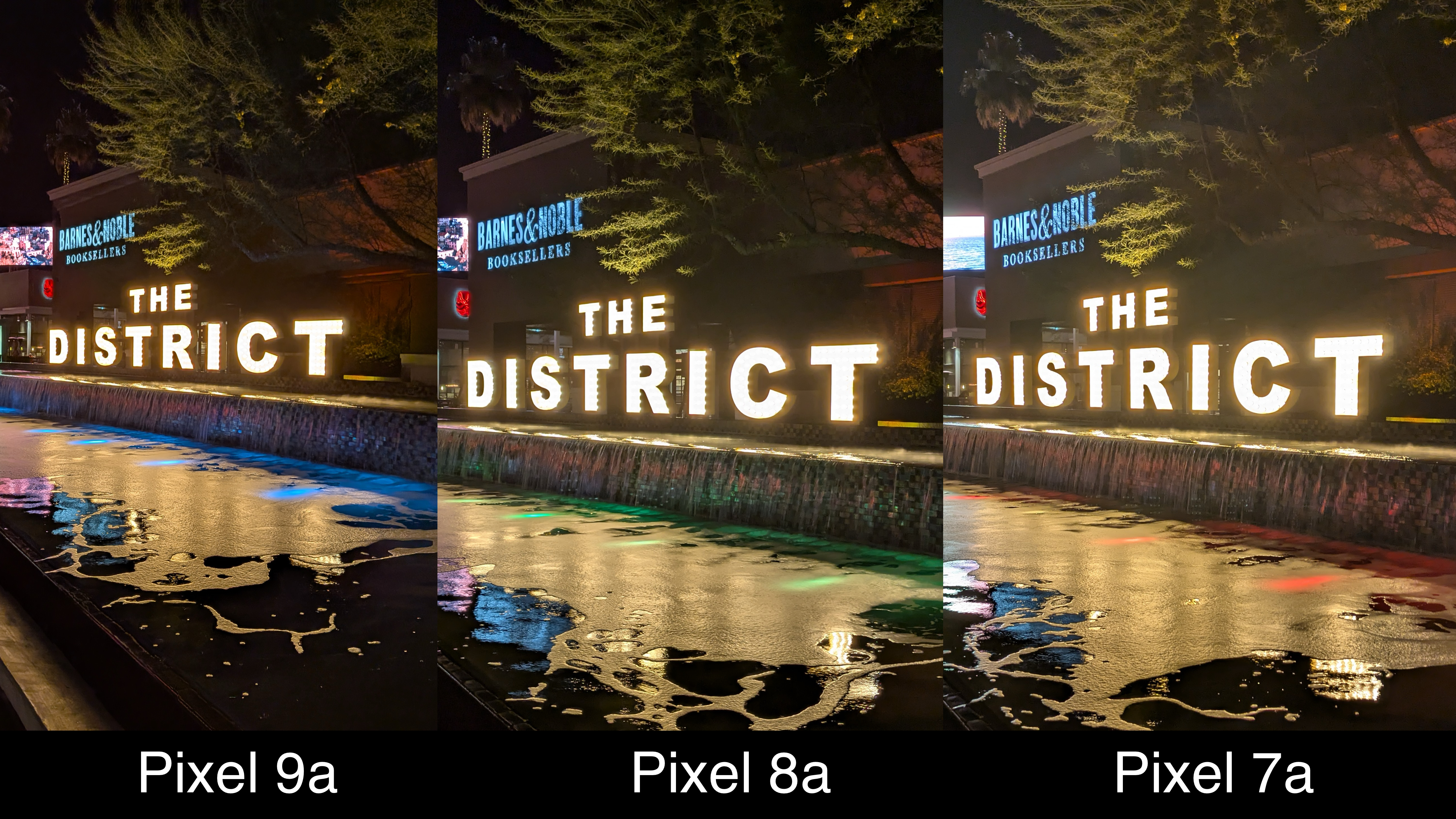
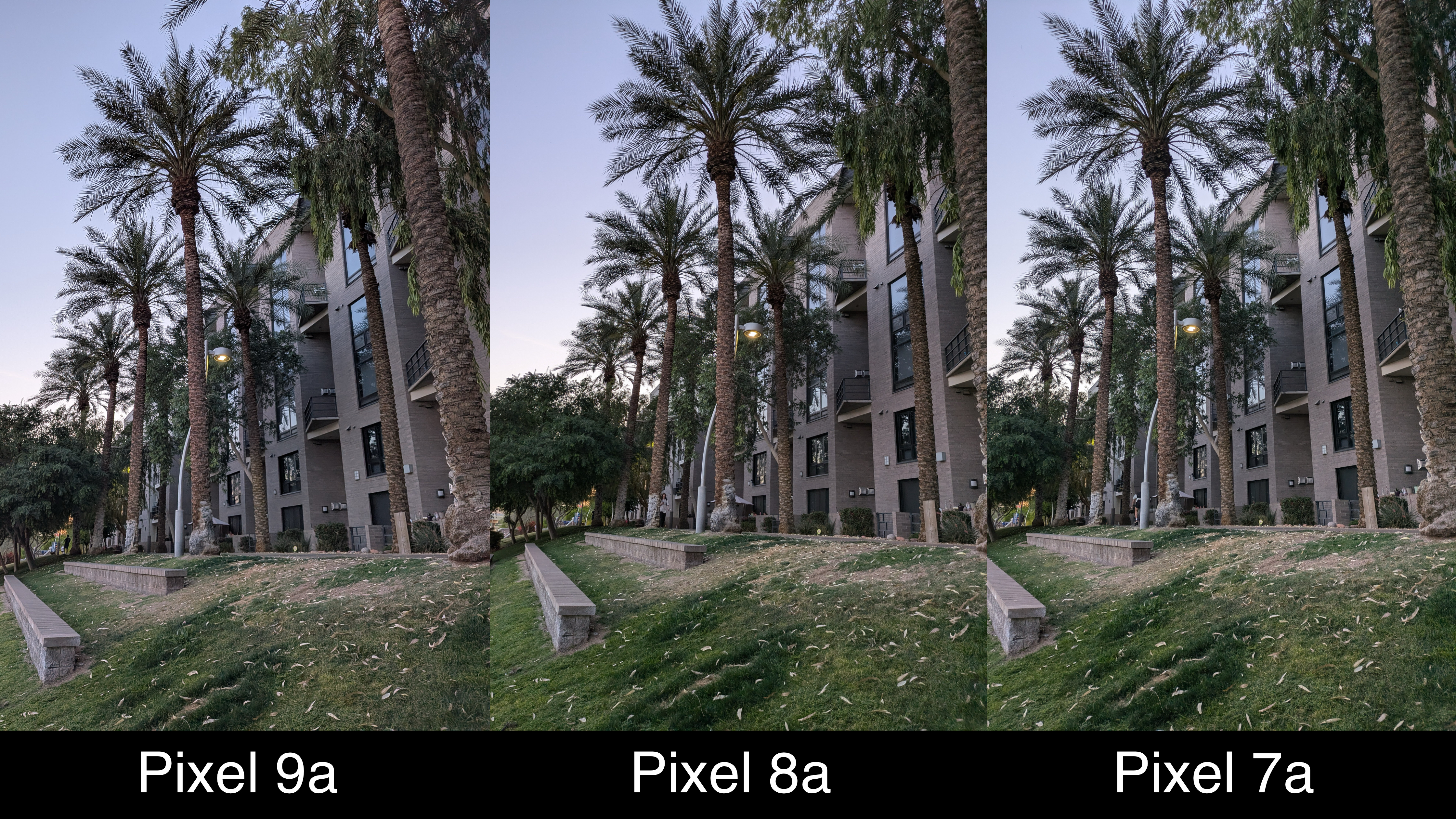
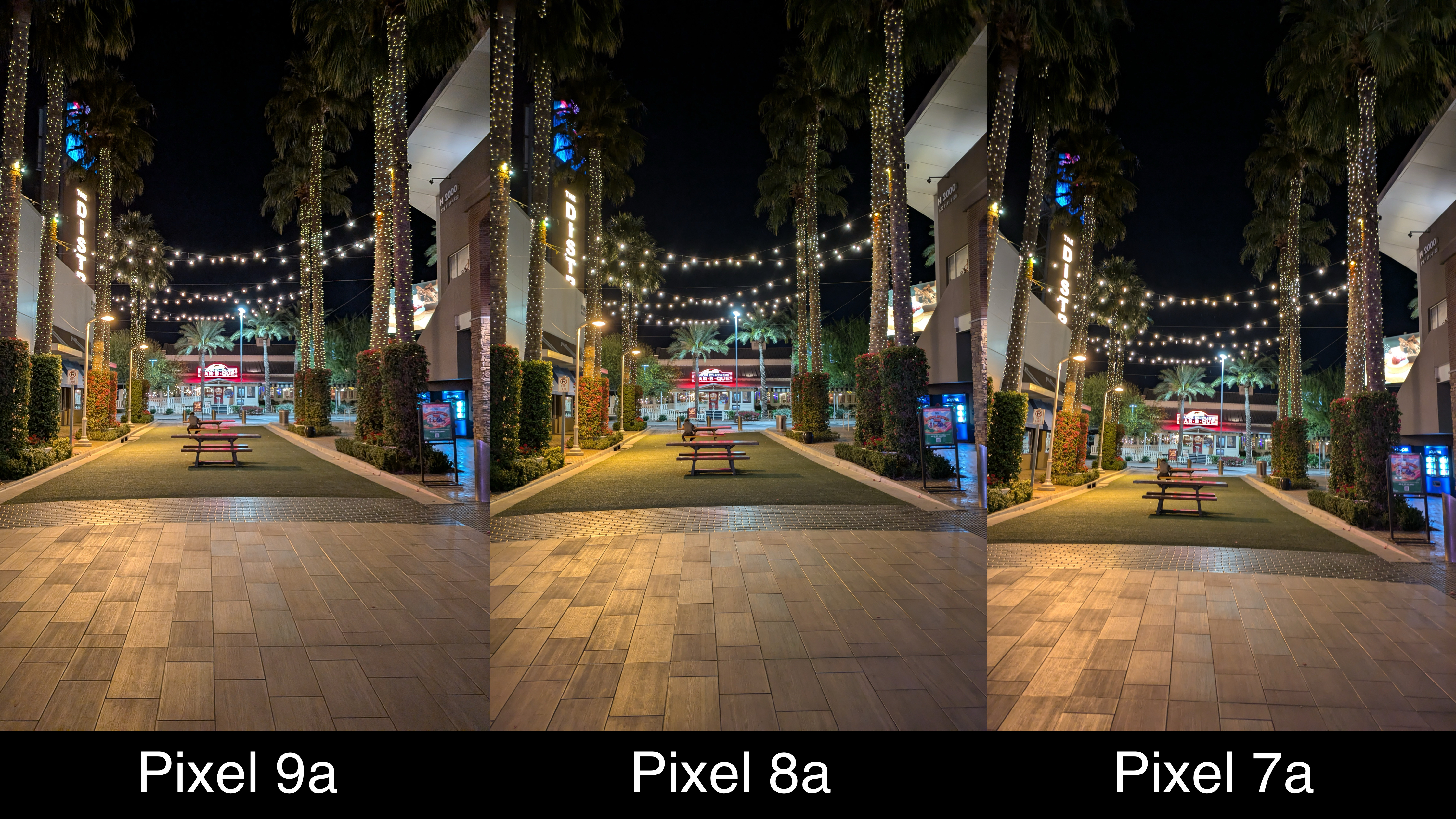
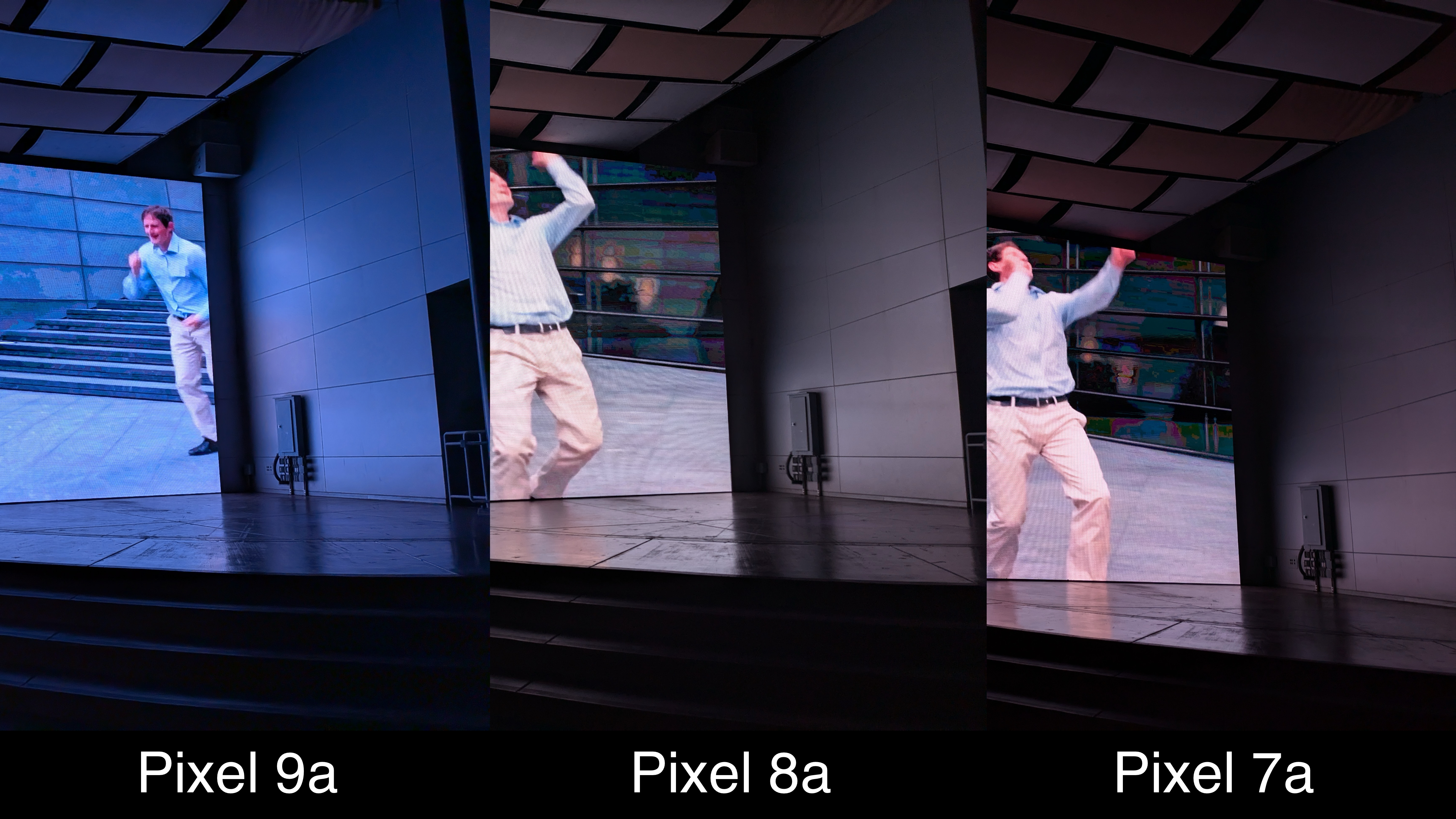
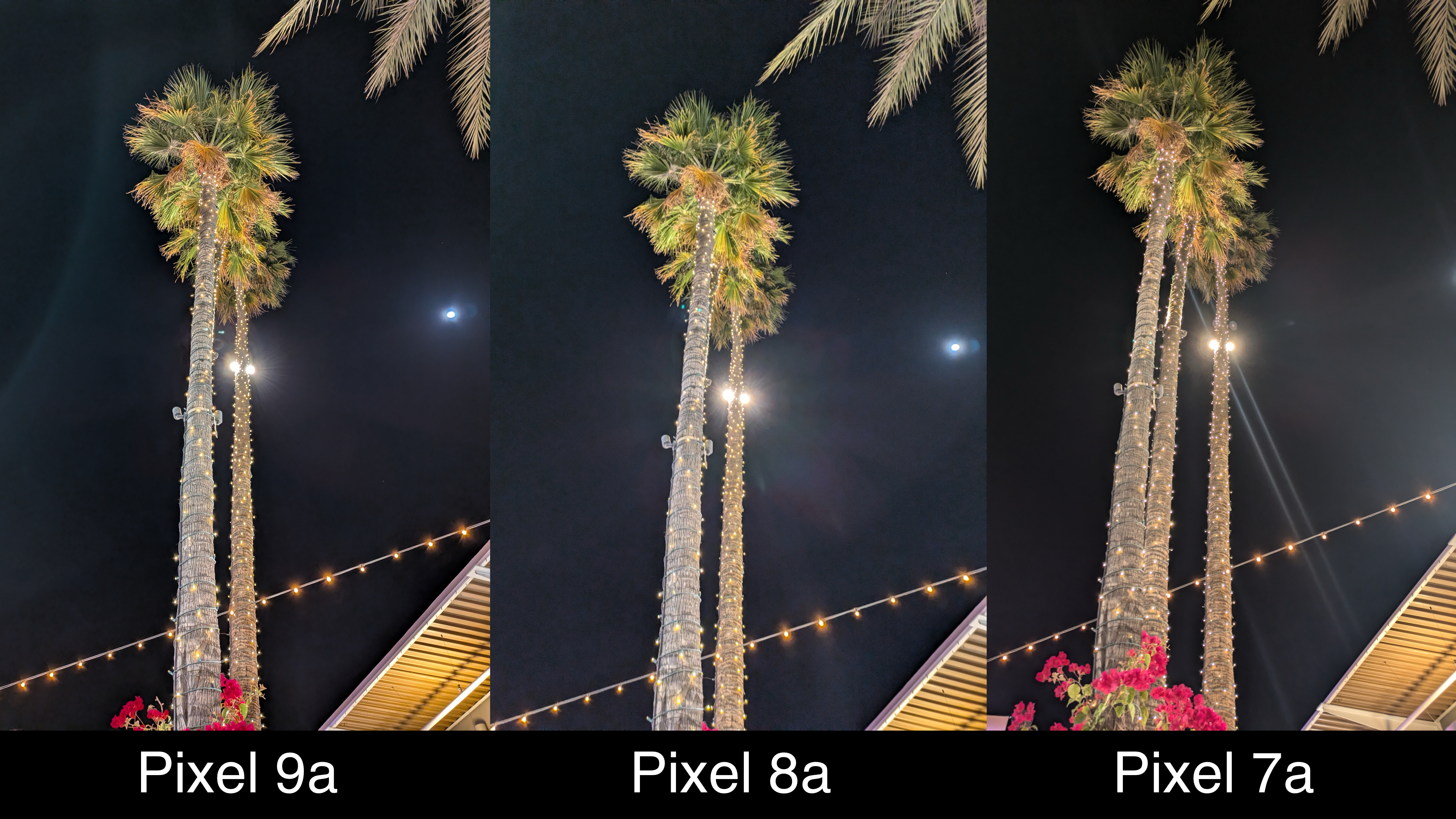
Specifically, you start to notice the small dip in detail when looking at something far off in a photo. In the first example photo, you can see the yellow pedestrian crossing sign looks a bit more blurry than the equivalent shots captured by the Pixel 8a and Pixel 7a.
A similar situation occurs with the barbecue restaurant's lighted sign in the fifth photo. These signs aren't as crisp and clear when captured by the Pixel 9a, but you have to zoom in to notice.
Night shots were the most hit-or-miss aspect of the Pixel 9a camera system, with some photos turning out perfect and others looking grainy or over-smoothened in processing. Still, you can say that of almost every budget phone's camera system, so this isn't a huge knock on the Pixel 9a.
If all you care about is raw detail, I could see the argument for preferring the Pixel 8a's main camera sensor. Personally, I think the Pixel 9a's improved color science and Macro Focus mode more than make up for any tiny loss in clarity you might notice.
How good is the Pixel 9a camera?
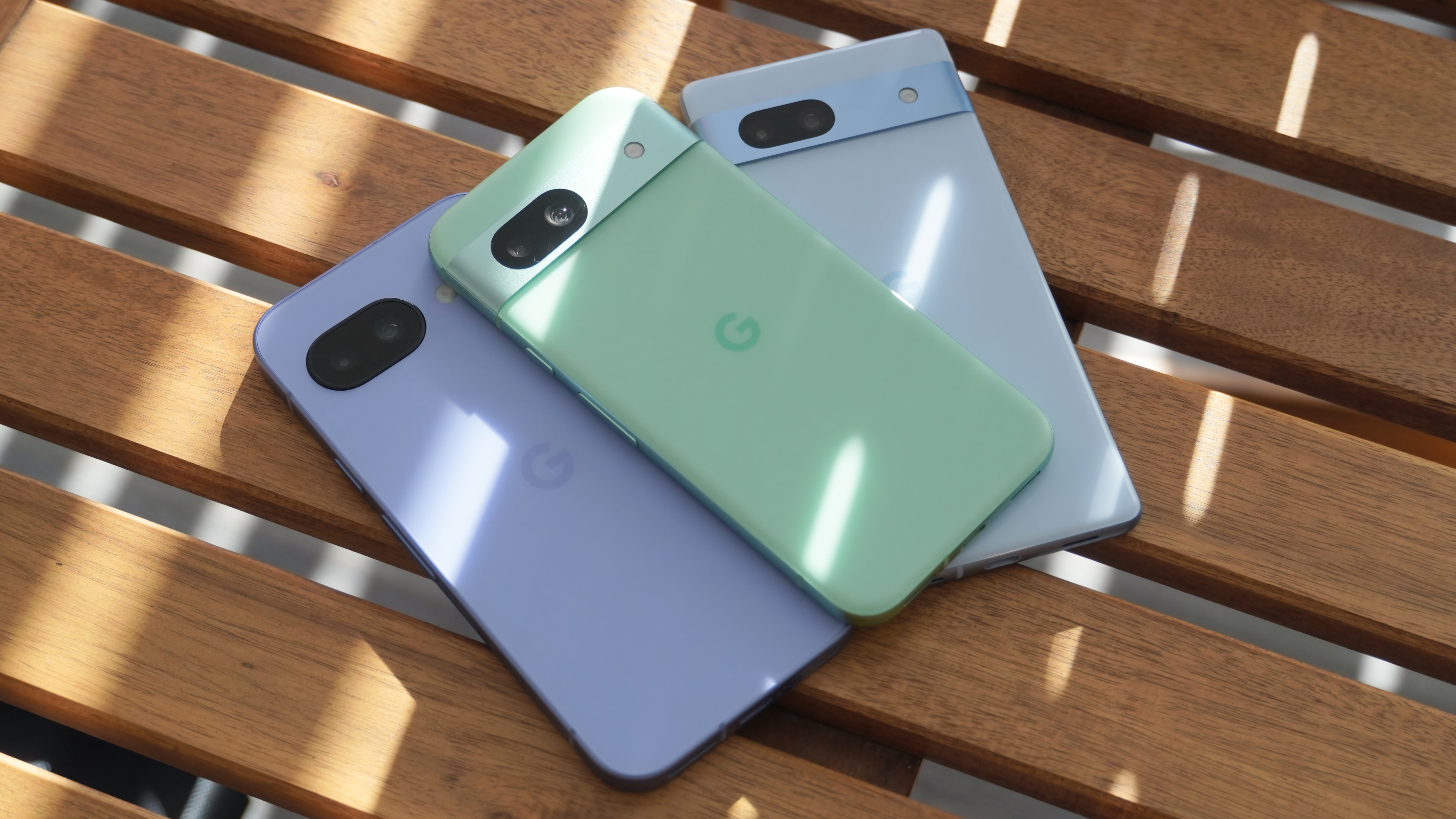
I was very skeptical of the Google Pixel 9a's camera performance, as the lower megapixel count and smaller sensor size could've led to a drastic drop in detail compared to previous A-series Pixels. However, that didn't turn out to be the case. I've criticized recent Google Pixel cameras for being too vibrant and inaccurate in terms of color science in the past, so it's a big deal to me that this is improved with the Pixel 9a.
As you can see in the final gallery below, the Pixel 9a can take great shots in a number of situations, performing better the more light there is available.
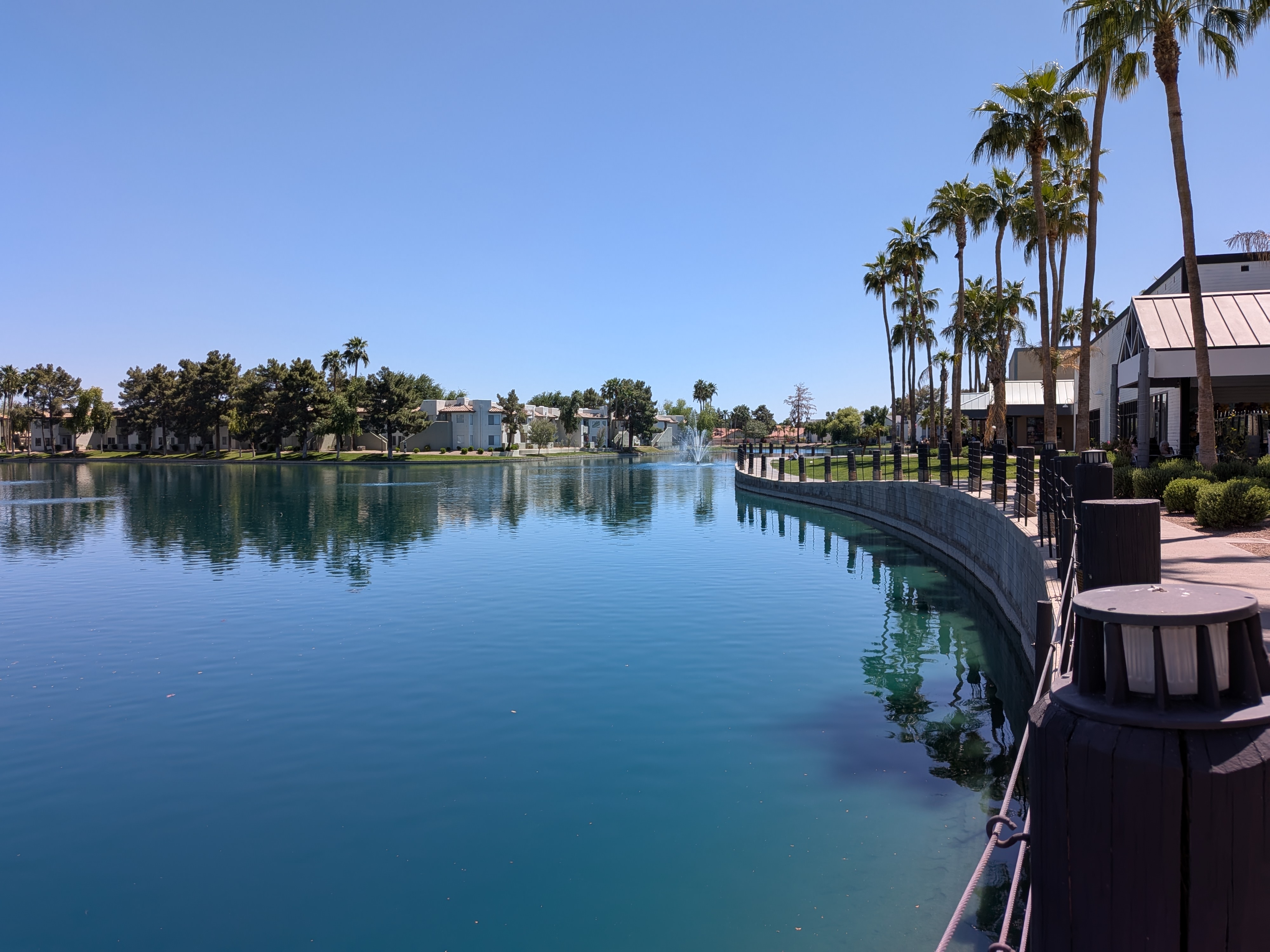
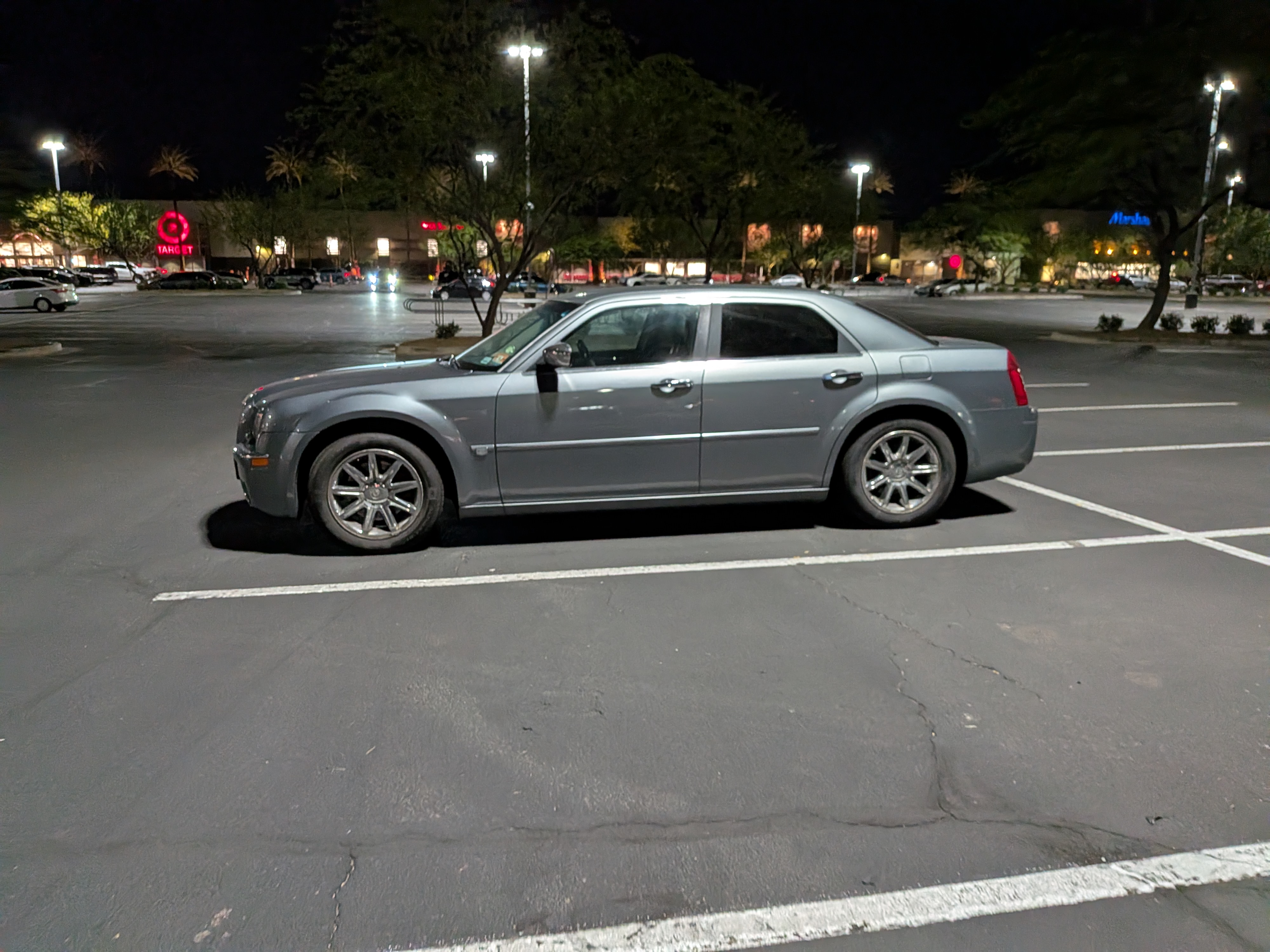
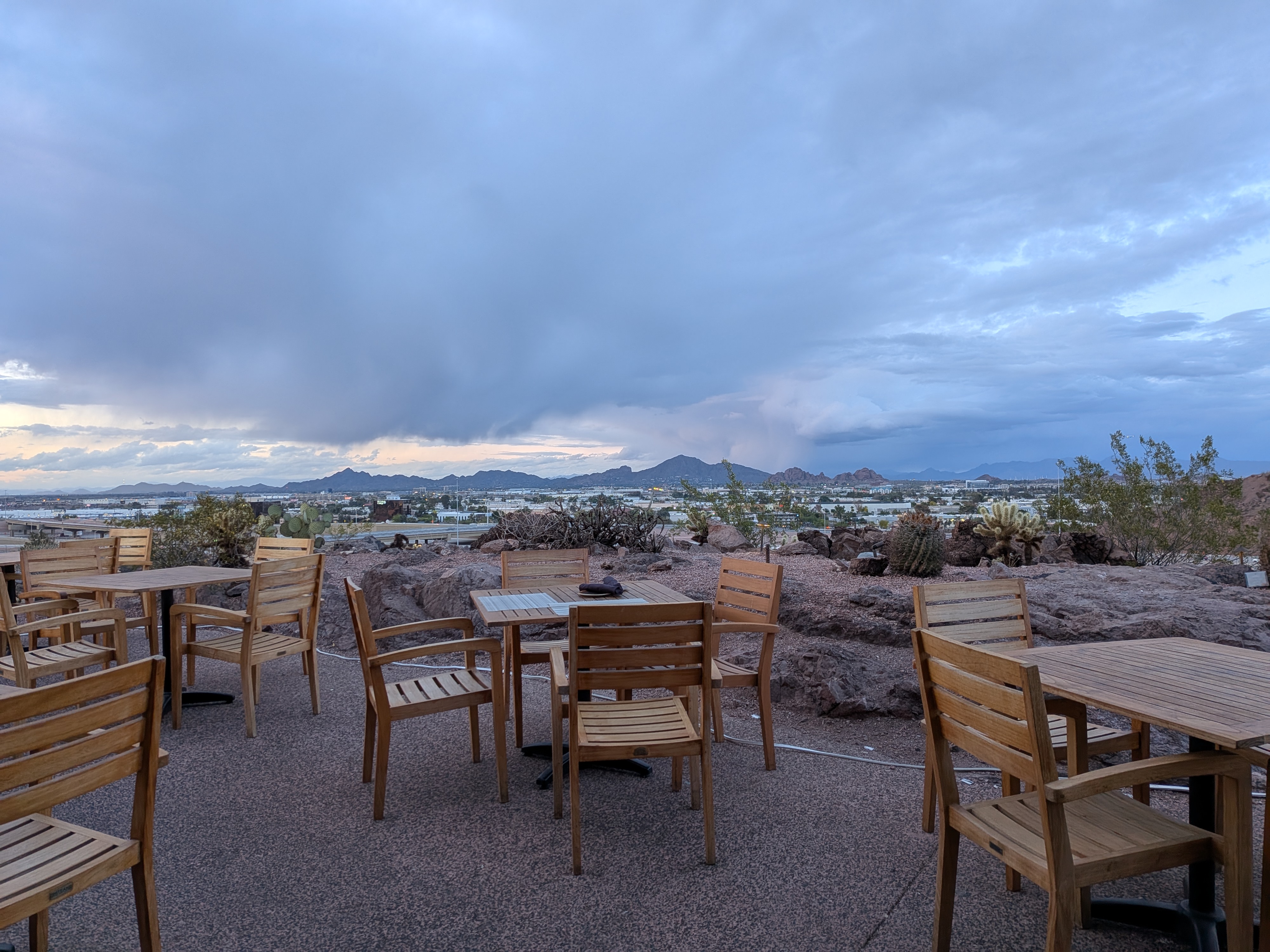
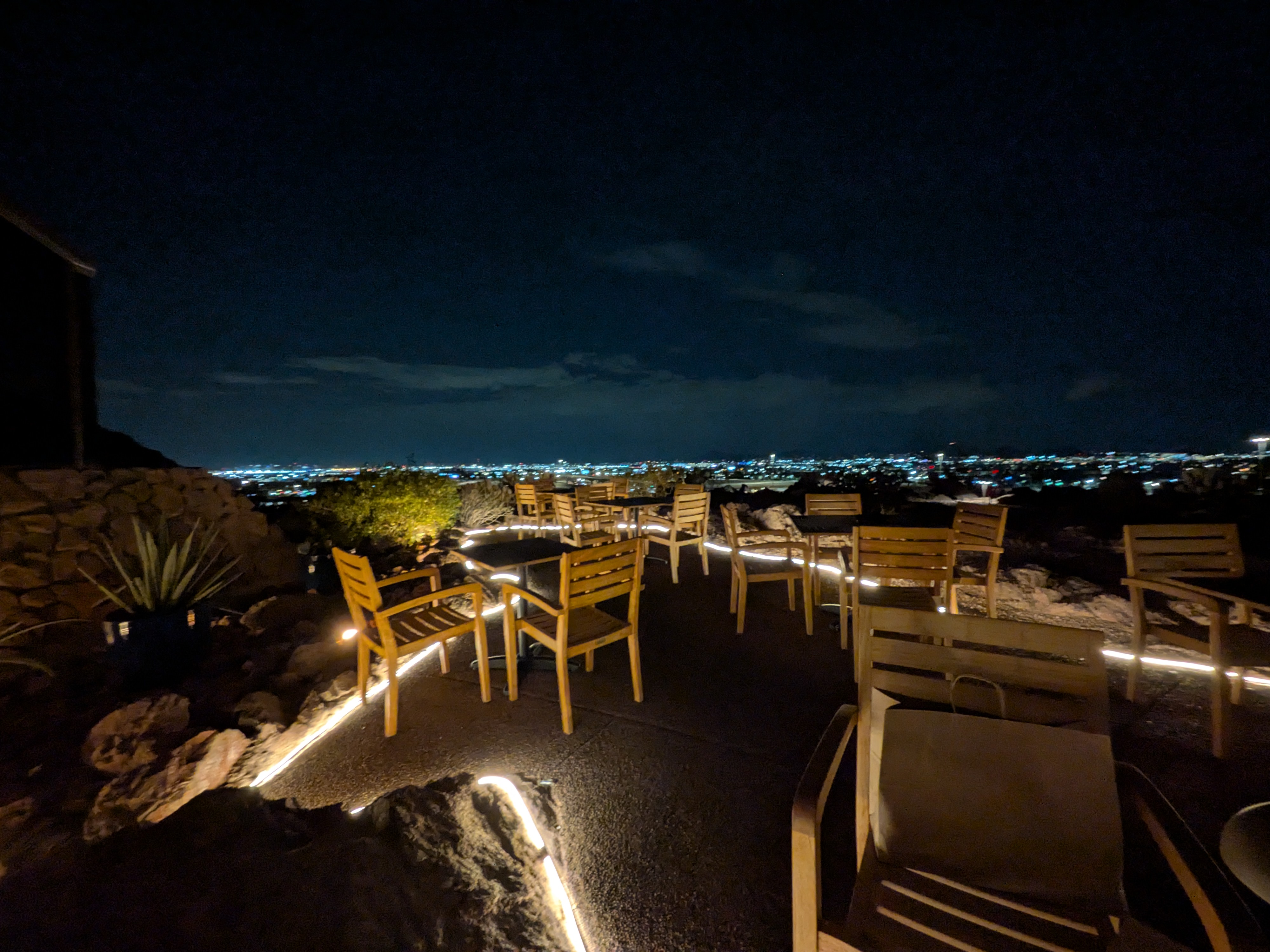
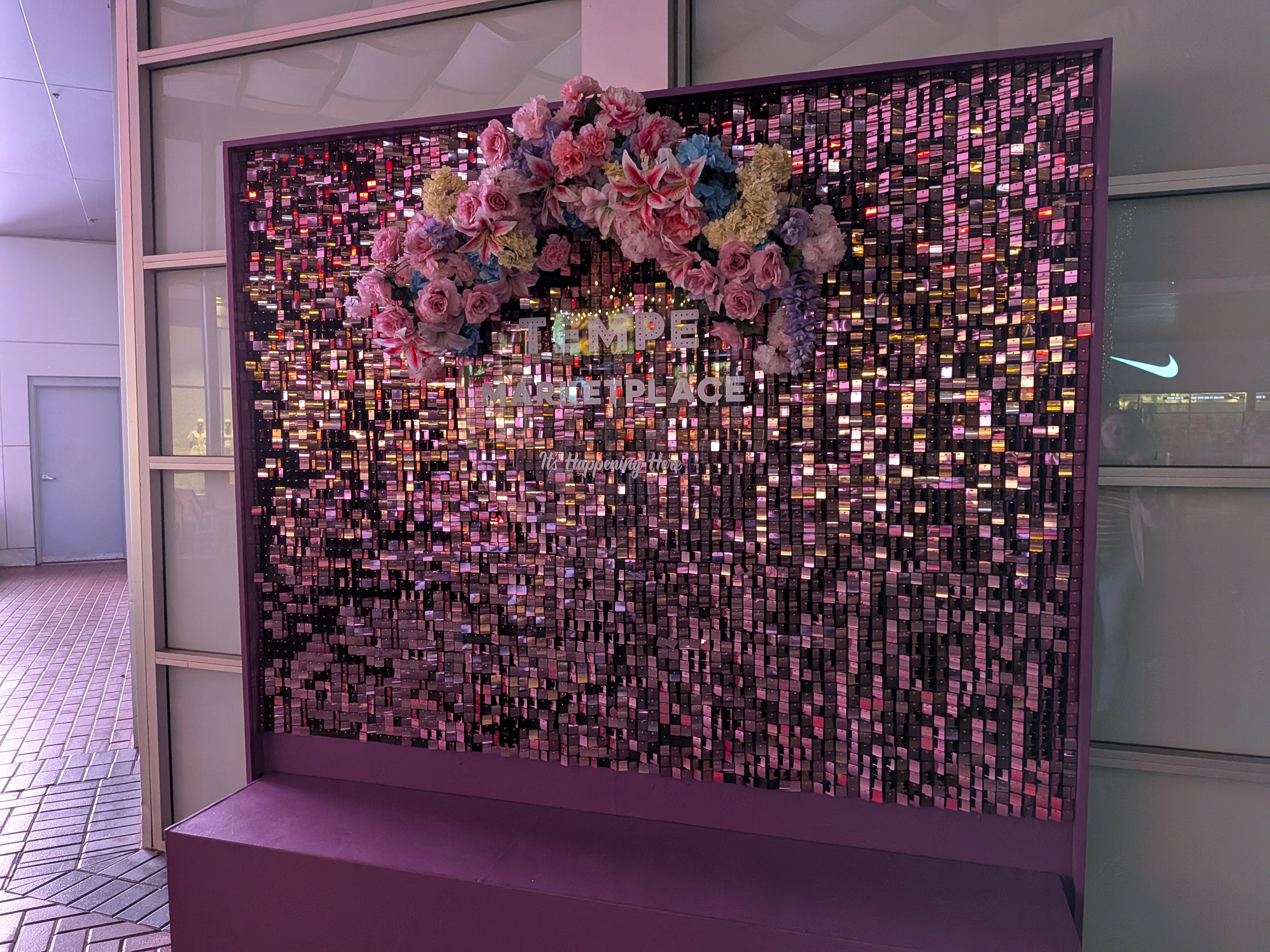
So, if you're in the market for a Pixel 9a and get spooked by the seemingly-worse camera system, there isn't any reason to panic. The Google Pixel 9a produces photos that are better holistically than both the Pixel 8a and the Pixel 7a. Due to the Pixel 8a's extremely poor color accuracy, the Pixel 9a's camera will be a noticeable improvement year-over-year.

Brady is a tech journalist for Android Central, with a focus on news, phones, tablets, audio, wearables, and software. He has spent the last three years reporting and commenting on all things related to consumer technology for various publications. Brady graduated from St. John's University with a bachelor's degree in journalism. His work has been published in XDA, Android Police, Tech Advisor, iMore, Screen Rant, and Android Headlines. When he isn't experimenting with the latest tech, you can find Brady running or watching Big East basketball.
You must confirm your public display name before commenting
Please logout and then login again, you will then be prompted to enter your display name.
